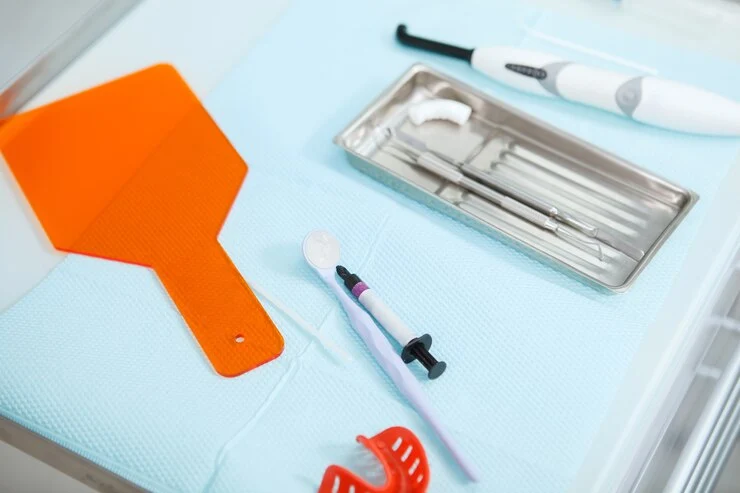Tonsil stones can be both uncomfortable and embarrassing. They often cause bad breath, irritation, and even difficulty swallowing. Thankfully, with the right tools, you can manage and remove these pesky stones effectively from the comfort of your own home.
Here, we will walk you through the best tools for removing tonsil stones, their effectiveness, and tips for safe removal. By the end, you’ll have a comprehensive understanding of how to deal with this issue.
What Are Tonsil Stones?
Before diving into the tools, it’s important to understand what tonsil stones are. Tonsil stones, or tonsilloliths, are hardened debris that accumulate in the small crevices of the tonsils. They are composed of dead cells, mucus, and food particles that can harden over time. This accumulation forms small, hard white or yellow lumps on the tonsils, often resulting in discomfort.
Common Symptoms of Tonsil Stones
- Bad breath (halitosis)
- Sore throat or persistent irritation
- Difficulty swallowing
- Visible white or yellow stones at the back of the throat
- Ear pain or pressure
Now that you have a better idea of what tonsil stones are, let’s look at how to safely remove them.
Are Tonsil Stones Harmful?
While tonsil stones can be irritating, they are generally not harmful. However, larger stones may cause swelling, infections, or ongoing bad breath, which is why removing them is often the best course of action.
Top Tools for Removing Tonsil Stones
When it comes to removing tonsil stones, using the right tools can make the process easier and safer. Here are some of the most effective solutions:
Cotton Swabs
One of the most common tools for removing tonsil stones is a simple cotton swab. This inexpensive, accessible tool is often used to gently push out smaller tonsil stones.
How to Use:
- Slightly moisten the cotton swab for improved grip.
- Position yourself in front of a well-lit mirror.
- Gently press around the stone to dislodge it.
- Be careful not to push too hard, as this can cause damage or bleeding.
Tonsil Stone Removal Kits
Pre-packaged tonsil stone removal kits are specifically designed to help individuals safely remove stones. These kits often come with long-handled tools and a small light to make the removal process easier.
Pros:
- Specially designed for tonsil stone removal
- Kits often include multiple tools (like curettes and tweezers)
- Often comes with a mirror and light for better visibility
Cons:
- Requires a steady hand
- May not work for deeply embedded stones
Water Flosser
A water flosser can be a very effective tool for tonsil stone removal. This device uses a stream of water to flush out debris lodged in the tonsils.
How to Use:
- Fill the flosser with warm water.
- Adjust it to the lowest pressure level.
- Aim the stream at the tonsil stones.
- The water will help loosen the stones and wash them out.
Benefits:
- Non-invasive
- Reduces the risk of injury
- Can be used regularly to prevent stones from forming
Tonsil Stone Removal Tools with LED Light
For a more targeted approach, you can opt for tonsil stone removal tools that come with an attached LED light. The light helps improve visibility, making it easier to locate and extract the stones.
How to Use:
- Use the built-in light to locate the stone.
- Gently dislodge it using the tool’s tip.
- Clean the area thoroughly afterward.
Oral Irrigators
Similar to a water flosser, an oral irrigator can help flush out stones without having to touch the tonsils directly. It is a safe and effective method for removing small stones.
Benefits:
- Effective at removing hidden stones
- Can be used as part of regular oral hygiene

Gargling with Salt Water
Though not technically a tool, gargling with salt water is one of the easiest and most effective methods for loosening tonsil stones.
How to Gargle:
- Mix 1 teaspoon of salt into a glass of warm water until dissolved.
- Gargle for 30 seconds, making sure to get the water as far back in your throat as possible.
- Spit out the water and repeat as necessary.
Salt water helps reduce inflammation and may dislodge smaller tonsil stones.
Ear Curette
An ear curette can be a very precise tool for removing tonsil stones. With a long handle and a small loop at the end, it can easily scoop out visible stones.
Pros:
- Designed for delicate areas
- Long handle offers more control
Cons:
- Potential for injury if not handled properly
Dental Irrigation Syringe
Another option is using a dental irrigation syringe. This tool allows you to flush water directly into the tonsil crypts, helping to dislodge any stones hiding in deeper pockets.
How to Use:
- Fill the syringe with warm water or salt water.
- Gently squirt the solution toward the tonsil stones.
- Let the water loosen and dislodge the stones.
Tonsil Tweezers
For more stubborn stones, tonsil tweezers (which have a curved tip) can be a useful tool. These are specifically designed for reaching into the tonsil area.
How to Use:
- Sterilize the tweezers before use.
- Use a mirror and light to locate the stone.
- Gently grip and pull the stone out.
Tonsil Stone Vacuum Device
A newer option is the tonsil stone vacuum device, which gently suctions out the stones without the need for pressing or prodding.
Benefits:
- Less risk of causing damage to the tonsils
- Non-invasive and painless
How to Prevent Tonsil Stones from Forming?
Removing tonsil stones is only part of the solution. Preventing them from forming is key to long-term relief. Here are some effective prevention tips:
Maintain Good Oral Hygiene
Brush your teeth and tongue at least twice a day, and make sure to floss regularly. Keeping your mouth clean will reduce the debris that can cause tonsil stones to form.
Stay Hydrated
Drinking plenty of water throughout the day helps wash away bacteria and debris before they can become trapped in your tonsils.
Use an Antibacterial Mouthwash
Rinsing with an antibacterial mouthwash can help kill bacteria that contribute to tonsil stone formation. Look for mouthwashes specifically formulated for tonsil health.
Consider a Low-Dairy Diet
Dairy products may boost mucus production, potentially leading to the formation of tonsil stones. If you are prone to tonsil stones, consider cutting back on dairy.
Regular Gargling
Even if you don’t have tonsil stones at the moment, regular gargling with salt water or an antiseptic mouthwash can help prevent them from forming.
When to See a Doctor
While home tools and remedies are effective for most people, there are situations where it’s important to see a healthcare professional:
- If the tonsil stones are large & causing discomfort
- If you experience repeated infections
- If you experience difficulty swallowing or breathing
- If home remedies are not effective after repeated attempts
In some cases, a doctor may recommend a tonsillectomy (removal of the tonsils) if the problem persists.
Conclusion
Tonsil stones are a common issue that can cause discomfort, but they can be managed and removed with the right tools and techniques. From cotton swabs to water flossers and tonsil tweezers, there are plenty of effective options to choose from.
Remember, maintaining good oral hygiene and practicing preventive care are key to reducing the likelihood of tonsil stones forming in the first place. If the problem persists, don’t hesitate to consult a medical professional for more advanced treatment options.




